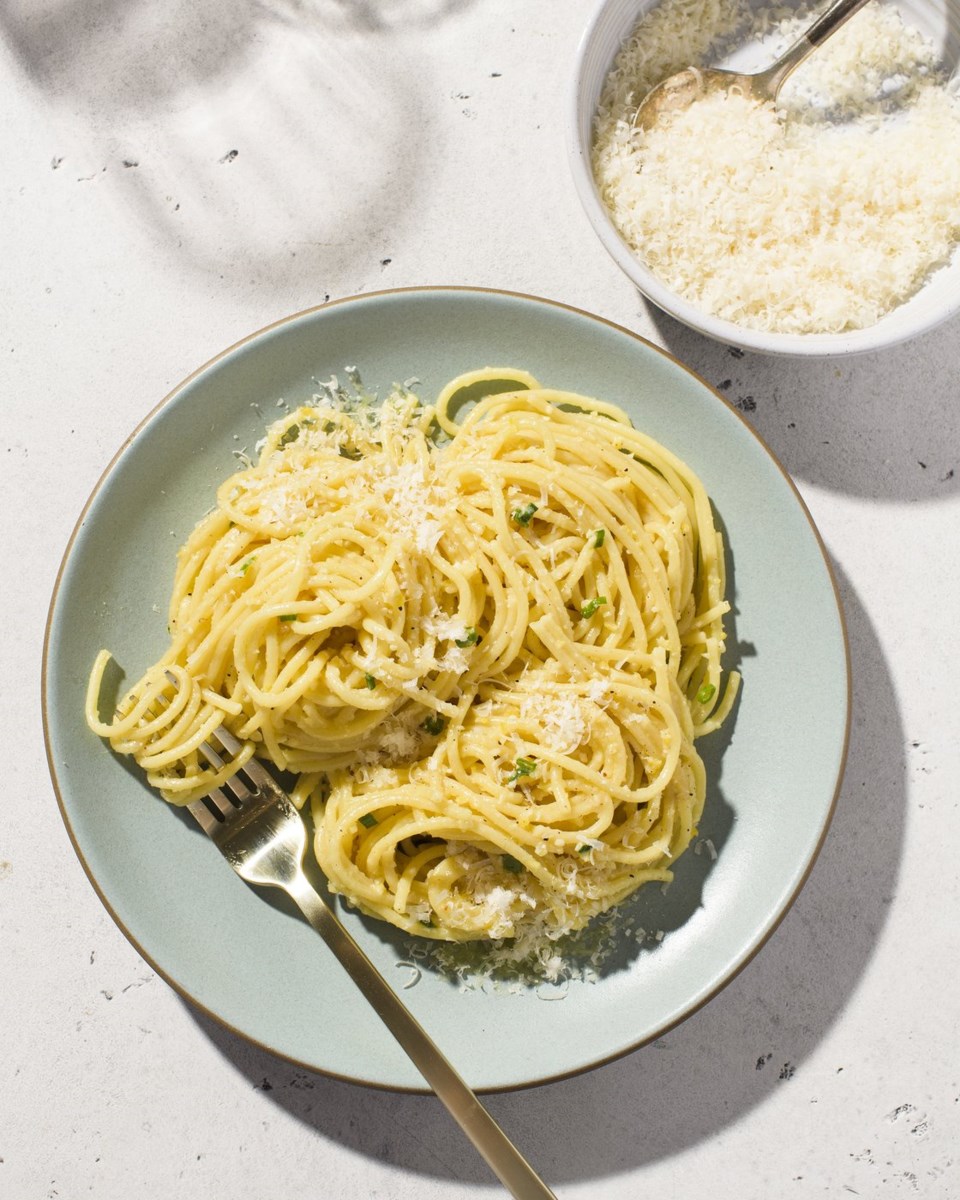In Amalfi, Italy, cooks making pesto forgo the classic fresh basil in favor of strips of zest from the local lemons, “sfusato amalfitano.” Combined with almonds, Parmesan and oil, it makes a bright, aromatic pesto perfect for tossing with pasta.
In our version of the recipe, from our cookbook “ ,” a little sugar is added to temper the acidity of the lemons and replicate the flavor of the larger, sweeter lemons on the Amalfi Coast. For extra citrus complexity, we also add lemon zest to the pasta cooking water; the oils from the zest lightly perfume the spaghetti, reinforcing the lemony notes of the pesto.
Instead of pounding the pesto with a mortar and pestle — as is classic with basil pesto — we use the food processor. The zest is removed from the lemons in large, thin strips, leaving the bitter white pith behind. Half of the strips go into the pasta water, along with a little salt and sugar; the remainder are added to the bowl of the food processor, then pulsed with the almonds and cheese until the mixture resembles coarse sand. Olive oil then is added and processed until just incorporated. Cook the spaghetti in the lemon-scented pasta water until al dente, then combine with the pesto and some of the starchy pasta cooking water. Toss, adding more pasta water as needed until it coats the noodles. Don’t forget to remove the lemon zest from the boiling water before dropping in the pasta. If left in as the spaghetti cooks, the zest may turn the water bitter, and the strips are a nuisance to remove from the strands of cooked noodles. Start to finish: 25 minutes Servings: 4 4 lemons Kosher salt and ground black pepper 1 1/2 teaspoons white sugar, divided 1 pound spaghetti 1/2 cup slivered almonds 1 ounce (without rind) Parmesan cheese, cut into rough 1-inch pieces, plus finely grated Parmesan to serve â…“ cup extra-virgin olive oil, plus more to serve 2 tablespoons finely chopped fresh chives Using a vegetable peeler (preferably a Y-style peeler), remove the zest from the lemons in long, wide strips; try to remove only the colored portion of the peel, not the bitter white pith just underneath. You should have about â…” cup zest strips. In a large pot, combine 2 quarts water, 1 1/2 teaspoons salt, 1 teaspoon of sugar and half of the zest strips. Bring to a boil and cook for 2 minutes, then remove and discard the zest. Add the spaghetti and cook until al dente. Reserve 1 1/2 cups of the cooking water, then drain the pasta and return it to the pot. Meanwhile, in a food processor, combine the remaining zest strips, the almonds, Parmesan, the remaining 1/2 teaspoon sugar and ¼ teaspoon each salt and pepper. Process until the mixture resembles coarse sand, 10 to 20 seconds. Add the oil and process just until the oil is incorporated (the mixture will not be smooth), about another 10 seconds; set aside until the pasta is ready. To the spaghetti in the pot, add the pesto and ¾ cup of the reserved pasta water, then toss to combine; add more reserved pasta water as needed so the pesto coats the noodles. Toss in the chives. Taste and season with salt and pepper. Serve drizzled with additional oil and with additional grated Parmesan on the side. EDITOR’S NOTE: For more recipes, go to Christopher Kimball’s Milk Street at
Christopher Kimball, The Associated Press




